Insulation for walls of the house outside: an overview of options + tips for choosing an external insulation
The use of thermal insulation systems in building structures can significantly reduce heating costs. The use of various heaters makes it possible to accelerate the pace of construction and reduce the budget for the construction of a house. In order for them to cope with their responsibilities, you need to know how to choose them. Do you agree?
We will tell you how to choose the right insulation for the walls of the house outside. In the article presented by us, all types of heat-insulating materials used in practice and operating features are described. Independent owners of suburban estates, we will find the technology of insulation of facades.
The content of the article:
The feasibility of external wall insulation
Heat loss through walls averages about 40%, depending on the integrity of the structure and the thickness of the wall. With rising gas and electricity prices, it becomes unacceptable to spend money on street heating.
Therefore, it is necessary to insulate the walls from the outside, which gives the following advantages:
- thermal insulation of the house from the outside does not take away the useful area of the living space indoors;
- there is no load on the walls and foundation;
- a layer of insulation performs decorative and protective functions for walls, extending the period of their use;
- walls insulated from the outside do not freeze and are not saturated with moisture from steam, as with internal insulation;
- thermal insulation materials also perform a soundproofing function.
But the main reason for warming the facade of the house is still economic, because this simple procedure is able to almost halve the amount in heating receipts.
For the proper selection of material designed to reduce heat loss, you need heat engineering calculation. His examples and formulas will be introduced by our recommended article.
Types of insulation materials
So what is better to insulate the house outside to reduce heat loss? Manufacturers offer many materials suitable for these purposes. But there are several main types.Among them: polystyrene foam, basalt cotton wool, glass wool, extruded polystyrene foam, mineral wool and others.
A less effective way of warming is the application of a layer of plaster on the outer part of the walls. This is an inexpensive way to reduceheat loss, but it requires experience and certain skills - just desire will not be enough.
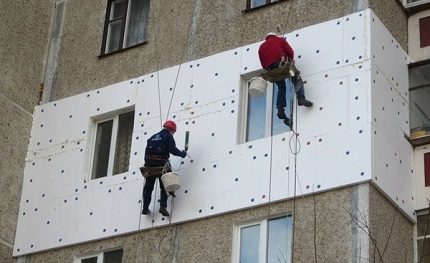
Wooden houses are often insulated with a double frame. In this case, any of the listed materials is mounted on the walls, and the lining is performed on top. In this case, between the insulation and decorative layers remains an air "cushion" for air ventilation.
Option number 1 - polystyrene
Expanded polystyrene has gained the greatest popularity among thermal insulation materials. First of all, this is due to its low cost. A distinctive feature of the insulation is also low weight.
Other advantages of the material:
- low thermal conductivity;
- affordable cost;
- long service life.
Among the disadvantages, it is possible to distinguish that the foam does not pass steam. This feature does not allow it to be used for warming wooden houses.
Among other disadvantages, it is significant that polystyrene foam is a combustible material that emits substances harmful to humans during combustion. In addition, the fragility of the material, which leads to damage to the insulation even with minor mechanical stresses, greatly complicates its installation.

Option number 2 - mineral wool
This material is also popular among owners of residential and non-residential premises.
Advantages of mineral wool:
- highvapor permeability, which prevents rotting of wooden structures, and bricks are not saturated with moisture, which prevents the appearance of mold and fungi on the surface of the walls;
- low cost;
- low weight of mats, which makes it easier to work with them and reduce transportation costs;
- the material is not combustible, there are no toxic odors;
- long service life.
There are three types of mineral wool: slag, glass wool and stone (it is also basalt). Each of the materials has its own characteristics.
Basalt cotton wool is considered to be the most suitable for residential buildings, since it is made from safe raw materials, unlike glass wool. In this case, the material is stronger and more durable slag. But the high cost of basalt wool is its drawback.
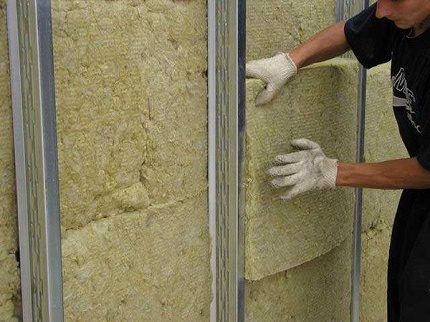
Modern glass wool is considered safe to use. Unlike the material of the same name, made ten years ago, it does not irritate the airways. It can be insulated not only external but also internal walls and ceilings.
Differs in ease of installation, low weight. It can be bought in the form of rolls or plates. It is more expedient to buy rolled material for warming long walls. And glass wool plates are suitable for small walls.
The following advantages of the material are distinguished:
- does not absorb moisture from the air;
- no toxic odors;
- not flammable;
- does not change shape during operation;
- high ratesvapor permeability;
- good soundproof properties;
- does not interact with chemicals;
- can be used in all climatic zones of the planet.
In some cases, rolled glass wool will cost less than that made in the form of plates. To cut it, you can use ordinary sharpened knives.
Material deficiencies are not very many. Among them:
- when insulating the walls with glass wool, you need to work in protective gloves and glasses;
- fragility of the fibers of the material, due to which a lot of synthetic substance during installation is in the air and prevents safe breathing.
Despite the fact that modern insulation material is an order of magnitudegreener and safer for humans, with a significant amount of polymer particles in the air it is better to use a respirator.

Option number 3 - estructured polystyrene foam
This material is made from ordinary foam.
After special treatment, he receives the following advantages:
- increased compressive strength;
- lowmoisture absorption;
- low combustibility or its complete impossibility, which depends on the amount of flame retardant substance;
- reduced thermal conductivity.
For such material you will need to pay a higher price than for ordinary polystyrene foam. But extruded polystyrene foam more durable and reliable.
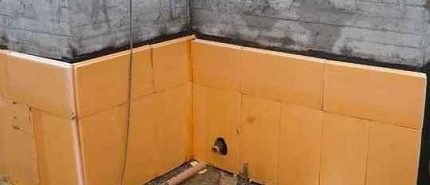
Another disadvantage is the smooth surface of the plate material. Because of this, the solutions do not “catch” with it, therefore, without preliminary preparation of the surface such a foam can not be used in the construction of “wet facade”.
It will be necessary to treat the smooth side with fine sandpaper to give it a rough surface. Additionally, you can apply a layer of adhesive primer, which will increase the penetration of the solution into the insulation material.
Option number 4 - bulk insulation
For external thermal insulation, bulk materials can also be used.
Among them, the most popular are:
- vermiculitis;
- perlite crushed stone;
- expanded clay.
Vermiculite can be used not only for wall insulation outside, but also from the inside. They are insulated with sewer and water pipes, floors, attics, foundation. It can be made in the form of plates. There are technologies by which this material is added to concrete or mortars.
Vermiculite is a natural material that does not emit harmful toxic odors. Its advantages are: durability, lightness, fire resistance, low thermal conductivity and sound absorption. Also, it does not absorb moisture.
To insulate the outer wall, bulk material can be added to the mortar or to fall asleep between the main wall and the decorative wall built on the foundation of facing bricks. This method is more expensive, since it requires the expansion of the foundation. An additional load on the foundation slab is also contemplated.
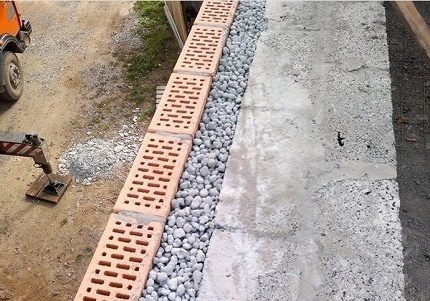
Vermiculite is sold in paper bags, usually 25 kg each. This is very convenient for transportation, because for delivery you can do with your own passenger transport.
Perlite, depending on the fractions, can be of various sizes. It is also used to insulate roofs and floors. It is a volcanicglassy odorless breed. It is widely used not only in construction, but also in metallurgy and agriculture.
Advantages of the material:
- porous structure;
- low cost;
- easily absorbs and gives moisture without losing its qualities;
- resistance to fire;
- low thermal conductivity.
A perlite layer of only 3 cm has the same thermal insulation efficiency as brick masonry 25 cm wide.
Expanded clay - granular porous material obtained by artificial means. When burning several components (peat, intumescent clay, hydrochloric oil, sawdust,sulfatoalcohol bard) it turns out fusible raw materials. It is foamed and heat treated to give the final shape.

The material is sold in fractions from 2 mm to 40 mm. Expanded clay is considered to be the most popular from 10 mm to 20 mm. It is they who need to fill the space between the walls - the main and decorative.
A layer of only 100 mm in terms of thermal conductivity replaces a brickwork of 1000 mm brick. In the cold season, the insulation will not allow the house to lose a lot of heat, and in the summer heat it will keep the room cool due to the extremely low thermal conductivity.
Advantages of wall insulation with expanded clay:
- it is one of the cheapest heaters;
- reduction in heat loss reaches 75%;
- can be used at any outdoor temperature and humidity;
- long service life;
- no burning and rotting of the material;
- expanded clay does not attract insects and rodents;
- you can insulate the house yourself, as it does not require high technical skills and special tools.
Expanded clay can be poured in the clear layer between the decorative and the supporting wall, or mixed with cement. The proportion of 1:10 is one part of cement and ten parts of expanded clay. A concrete mixer and water are required to dissolve the cement. The finished mixture is poured into the empty space between the walls.
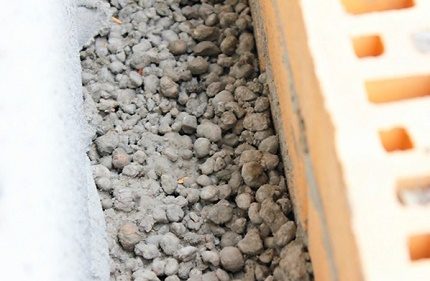
You can also do otherwise: first pour expanded clay to a height of 300 mm, and then soak it with the prepared cement "milk". Then again fill up the insulation. And so repeat until the height of the insulation reaches the desired level.
Any of the methods will not affect the thermal insulation properties of the material.
Facade insulation technologies
There are three main technologies for insulating facades:
- «well»Method - device of a multilayer wall;
- Wet method - under plaster coating;
- Dry method - technology “ventilated facade”.
Depending on the selected insulation method heat-insulating materials suitable for sale should be chosen.
Wet Method represents the application of a topcoat to a layer of insulation in the form of a stucco mixture. Since the mixture is rich in moisture, it is necessary to use only materials that do not absorb water. Styrofoam is best suited for this, but mineral wool is also used.

Depending on the strength of the wall and the integrity of the brickwork, the plaster system can be “light” and “heavy”. In the first case, the main goal is to reduce the weight of the insulation layer.
Insulation is fixed to the wall with glue and dowels. Outside, it is protected by a thin aluminum metal profile. Only a thin decorative layer of plaster is applied to it, to level the surface of the wall and give it a complete visual appearance.
In the "heavy" system, the insulation is fixed with metal anchors and pressed with reinforcing mesh. A 5-5.5 cm layer of plaster is applied on top. This design is reliably protected from temperature and moisture.
With the "dry" method insulation plaster is not used at all. The insulation is fixed on the wall with glue and mounting "umbrellas." Perfect in this case Penoplexfor which telescopic fasteners with wide caps and other mounting elements are specially manufactured.
From the outside, the insulation is protected by a membrane layer, the main task of which is to provide protection from atmospheric water.The membrane is fixed with remote metal or wooden slats, forming a ventilation gap between the insulation and the casing.
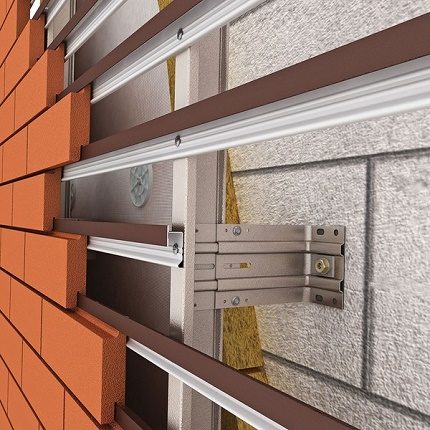
The width of the gap is up to 5 cm. The cladding layer can be made of various panels: wood, steel. It can also be masonry in the "half brick", tile or siding. This method of insulation is more durable, in contrast to “wet”, and can reach a service life of half a century.
By multilayer technology the surface is insulated with two more layers: from the insulation and the outer wall of brick. This method of insulation has been described above. Various bulk materials that are resistant to steam, condensate and moisture (expanded clay, perlite, etc.) are suitable for him.
Material Guidelines
For the proper choice of insulation, several more factors must be taken into account that can affect the quality of the work performed.
The condition of the walls and foundation. If the house is old, and the foundation or brickwork has already cracked, then it is necessary to abandon heavy insulation structures. In this case, the installation of light and durable materials is best suited. It is better to fix them with the help of special adhesive compounds.
The architectural complexity of the building. Polyfoam and mineral wool are well processed and make it possible to provide reliable insulation of walls with recesses, patterns and other decorative elements.
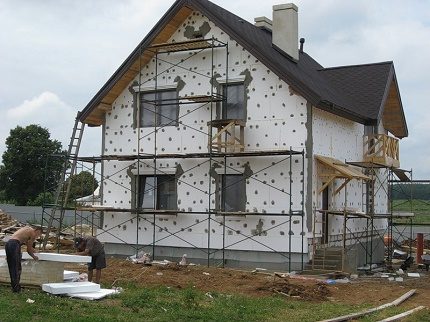
Insect and rodent resistance. Often under a layerheat insulator small rodents and insects, such as mice or ants, can make nests for themselves.
If there is such a problem on the site, then it will be advisable to conduct insulation using bulk materials. Expanded clay is well suited, since it does not attract animals.
It is also necessary to take into account other factors, such as the price of the insulation, features of its installation, wall material, environmental impact, fire resistance, etc.
If you plan to install a thermal insulation system from inside the house, you should read next articlein which materials and methods of their application are analyzed in detail.
Conclusions and useful video on the topic
To avoid common mistakes when choosing materials for insulation, we recommend watching the following videos:
With all the variety of materials and methods of insulation available, you can always choose the most suitable. Despite the fact that some works seem easy to perform, it is better to entrust them to experienced builders and heat engineers.
Want to talk about how to choose a heater for your own country house? Do you have information that is useful to site visitors? Please write comments, ask questions about controversial or interested points, post a photo in the block below.

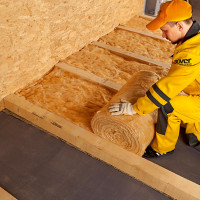 Insulation for the floor in a wooden house: materials for thermal insulation + advice on choosing insulation
Insulation for the floor in a wooden house: materials for thermal insulation + advice on choosing insulation 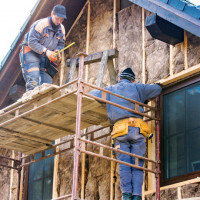 Insulation of a private house outside: popular technologies + material overview
Insulation of a private house outside: popular technologies + material overview 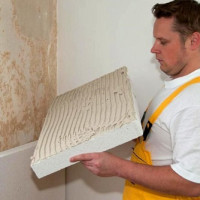 Types of insulation for the walls of the house from the inside: materials for insulation and their characteristics
Types of insulation for the walls of the house from the inside: materials for insulation and their characteristics 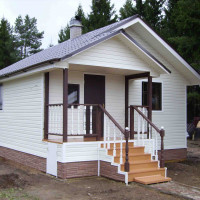 Finishing the house from the outside: types of finishing materials, their advantages and disadvantages
Finishing the house from the outside: types of finishing materials, their advantages and disadvantages 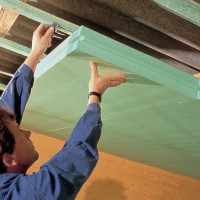 Extruded polystyrene foam as insulation: material pros and cons + application tips
Extruded polystyrene foam as insulation: material pros and cons + application tips 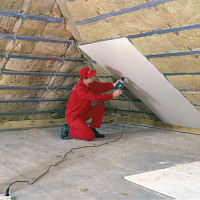 Do-it-yourself attic insulation from the inside: step-by-step instruction on insulation + tips for choosing materials
Do-it-yourself attic insulation from the inside: step-by-step instruction on insulation + tips for choosing materials  How much does it cost to connect gas to a private house: the price of organizing gas supply
How much does it cost to connect gas to a private house: the price of organizing gas supply  The best washing machines with dryer: model rating and customer tips
The best washing machines with dryer: model rating and customer tips  What is the color temperature of light and the nuances of choosing the temperature of the lamps to suit your needs
What is the color temperature of light and the nuances of choosing the temperature of the lamps to suit your needs  Replacement of a geyser in an apartment: replacement paperwork + basic norms and requirements
Replacement of a geyser in an apartment: replacement paperwork + basic norms and requirements
Without high-quality insulation, nowhere.You can’t save on this, because this is a reduction in your expenses, which subsequently go to heating. Let, of course, it does not immediately pay off, but nonetheless, the benefits of the insulation are palpable.
I initially thought of insulating inside, but then I realized that it would be better outside. Indeed, I will not “eat” the useful space of the rooms, there is less noise from the street, especially if the windows come with noise isolation. I chose mineral wool for warming, I did everything myself.
Hello. Houses are usually insulated from the outside to avoid dew point displacement inside the building structure. So, you were absolutely right in choosing just such a way of positioning the insulation.
Min cotton wool is unhealthy. It has long been banned in Europe, for example, in Germany. It is better to use stone wool, or MDVP or bulk insulation.
Hello. Glass wool, stone wool, slag wool, basalt wool - these are all MINVATA (mineral wool). Its varieties. Therefore, to recommend stone wool instead of mineral wool, it is the same as recommending “Renault” instead of a car.
In addition, no one forces you to sniff mineral wool or eat it. She hides in layers and has no effect on health, except perhaps on the health of the finisher during the execution of work, and it is just enough to follow the rules of equipment. And now sandwiches have been invented for a long time, as the safest application of this type of insulation.
In addition, min. Vata is not a sound insulator. Absolutely.
Hello. Truth? Yes, manufacturers of mineral wool will forgive you 🙂 Even logically think how a material with a flexible fibrous and dense “skeleton” can have poor soundproofing properties. Remember the expression - “heard through the cotton wool”, “like cotton wool in the ears” ... And then look at the table of soundproofing characteristics of this material.
Yes, you need to insulate the outside. In addition to the already indicated factor of saving the internal areas of the house, external insulation extends the life of the building, since the facade will be less sensitive to temperature fluctuations. I was dissuaded from using mineral wool. They say that it is not suitable for insulation from the outside, so I used polystyrene foam. Good material and very easy to install, immediately available in convenient blocks.
In addition to buildings made of wood, foam plastic cannot be used in structures made of aerated concrete. This applies specifically to wall insulation from the outside. From the inside it can be used, but very rarely. Suppose the temperature in the building is always constant and they do not live in it for a long time. The best option for such walls is mineral wool. It is easier to mount it, and the price is not biting, as in the other options presented.
Hello. Aerated concrete has high vapor permeability parameters. People who live indoors release and produce a large amount of liquid, which in one way or another turns into steam. It would seem that mythical breathing walls should absorb all this steam, but at the same time, about 97% of the steam rushes out through the ventilation. In addition, the vapor permeability of the walls is reduced by finishing materials - wallpaper, paint, plaster and so on.
According to the construction recommendations, the design feature of the building should primarily include several factors: thermal insulation, air insulation, vapor permeability. That is, the diffusion of vapors from the house should not rush through the walls, and a comfortable microclimate provides properly equipped ventilation.
Therefore, in any case, although warming with mineral wool will create a vapor permeability potential, this method is not correct.For any insulation, it is necessary to provide a vapor barrier circuit, which will be located not only in the pie insulation outside the building, but primarily inside. Of course, for starters, we provide quality ventilation.
The second step is to create a vapor barrier that will prevent the diffusion of vapors into the material, in our case, into aerated concrete. And only then we proceed to the exterior decoration, including polystyrene foam.
PPP / EPSP can not be used, especially in wooden / brick / aerated concrete houses.
Why are you so with wood / brick / concrete? Of course, in most cases, ventilated facades are chosen, but this is not necessary at all 🙂
I looked at user comments ... Everyone is talking about meters, noise insulation, the harmfulness of materials, because of which it is necessary to carry out insulation of the external type.
I will make a small addition to the article.
There is such a thing as a dew point. This is a place in which incoming cold steam from the street encounters a warm temperature at which condensation can occur. So it is with your wall. Imagine an ordinary thin wall warms up completely at home, but it’s cold in the house. You decide to conduct insulation, put a “Feng Shui” insulation on the walls in the house, and then live quietly until a lush, moldy garden begins to grow under your insulation. This happens due to a shift of the dew point inside the building structure and stopping the movement of moisture by internal vapor barrier materials.
It is necessary to insulate so that the vapor barrier properties of the walls decrease, and the heat insulating gradation increases. In addition, materials such as brick or concrete walls accumulate temperature and then issue it in the opposite direction. Remember the hot summer, when a brick heated in the sun gives off heat in the evening. But the same thing happens in the cold. Imagine that with external insulation, they absorb much less cold, but at the same time they warm up from the inside.
Thermal insulation impedes the flow of air, however, unlike materials, it does not accumulate it. And this means that the internal warming in any case is much less effective, that is, the cold of the house in this embodiment is much faster.
Next, about the bridges of cold. Overlapping plates, seams, etc., form cold bridges. If the insulation is internal, they are in no way closed and cold air penetrates through them. Thus, it is external insulation that is much more effective than internal insulation in terms of heat and sound insulation and, in addition, prolongs the life of building materials.